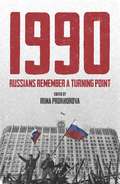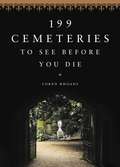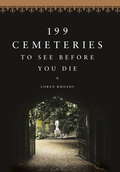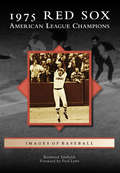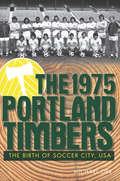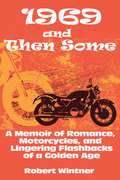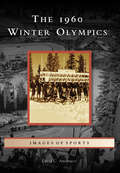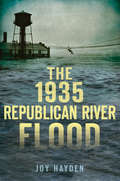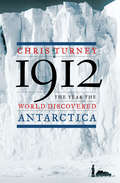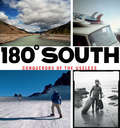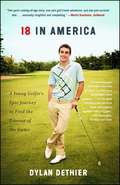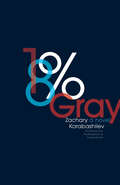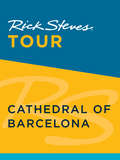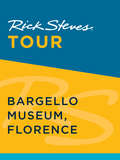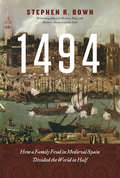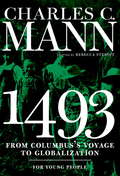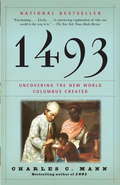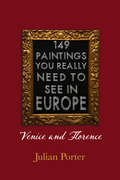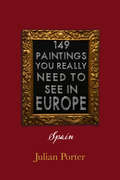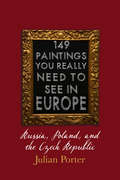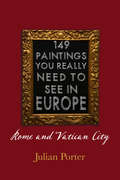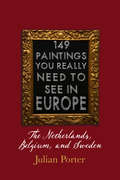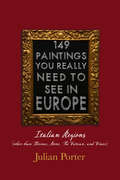- Table View
- List View
1990: Russians Remember a Turning Point
by Arch Tait Irina ProkhorovaAlthough 1989 and 1991 witnessed more spectacular events, 1990 was a year of embryonic change in Russia: Article 6 of the constitution was abolished, and with it the Party's monopoly on political power. This fascinating collection of documentary evidence crystalises the aspirations of the Russian people in the days before Communism finally fell. It charts - among many other social developments - the appearance of new political parties and independent trade unions, the rapid evolution of mass media, the emergence of a new class of entrepreneurs, a new openness about sex and pornography and a sudden craze for hot-air ballooning, banned under the Communist regime. 1990 is a reminder of the confusion and aspirations of the year before Communism finally collapsed in Russia, and a tantalising glimpse of the paths that may have been taken if Yeltsin's coup had not forced the issue in 1991.
199 Cemeteries to See Before You Die
by Loren RhoadsA hauntingly beautiful travel guide to the world's most visited cemeteries, told through spectacular photography and their unique histories and residents. More than 3.5 million tourists flock to Paris's Père Lachaise cemetery each year. They are lured there, and to many cemeteries around the world, by a combination of natural beauty, ornate tombstones and crypts, notable residents, vivid history, and even wildlife. Many also visit Mount Koya cemetery in Japan, where 10,000 lanterns illuminate the forest setting, or graveside in Oaxaca, Mexico to witness Day of the Dead fiestas. Savannah's Bonaventure Cemetery has gorgeous night tours of the Southern Gothic tombstones under moss-covered trees that is one of the most popular draws of the city. 199 Cemeteries to See Before You Die features these unforgettable cemeteries, along with 196 more, seen in more than 300 photographs. In this bucket list of travel musts, author Loren Rhoads, who hosts the popular Cemetery Travel blog, details the history and features that make each destination unique. Throughout will be profiles of famous people buried there, striking memorials by noted artists, and unusual elements, such as the hand carved wood grave markers in the Merry Cemetery in Romania.
199 Cemeteries to See Before You Die
by Loren RhoadsA hauntingly beautiful travel guide to the world's most visited cemeteries, told through spectacular photography and their unique histories and residents.More than 3.5 million tourists flock to Paris's Père Lachaise cemetery each year. They are lured there, and to many cemeteries around the world, by a combination of natural beauty, ornate tombstones and crypts, notable residents, vivid history, and even wildlife. Many also visit Mount Koya cemetery in Japan, where 10,000 lanterns illuminate the forest setting, or graveside in Oaxaca, Mexico to witness Day of the Dead fiestas. Savannah's Bonaventure Cemetery has gorgeous night tours of the Southern Gothic tombstones under moss-covered trees that is one of the most popular draws of the city.199 Cemeteries to See Before You Die features these unforgettable cemeteries, along with 196 more, seen in more than 300 photographs. In this bucket list of travel musts, author Loren Rhoads, who hosts the popular Cemetery Travel blog, details the history and features that make each destination unique. Throughout will be profiles of famous people buried there, striking memorials by noted artists, and unusual elements, such as the hand carved wood grave markers in the Merry Cemetery in Romania.
1975 Red Sox: American League Champions (Images of Baseball)
by Raymond Sinibaldi Fred LynnThe 1975 American League Champion Boston Red Sox squared off with the Cincinnati Reds in what is widely recognized as one of the best World Series ever played. The Major League Baseball Network has named its sixth game "the greatest game ever played." The Red Sox were led by two rookies, 21-year-old Jim Rice and 22-year-old Fred Lynn, who formed a rookie duo the likes of which baseball had never seen. They combined with a budding superstar in Carlton Fisk and his aging counterpart Carl Yastrzemski to lead the Red Sox attack, while a wily Luis Tiant anchored the pitching staff. After a first-round sweep of the three-time World Champion Oakland A's, they advanced to a Fall Classic that echoes through the ages, and in the words of Carlton Fisk, the Red Sox won "three games to four.
The 1975 Portland Timbers: The Birth of Soccer City, USA (Sports)
by Michael OrrRelive the magic of the Portland Timbers' 1975 season and the birth of Soccer City, USA. This is the story of seventeen players and two coaches who came from different clubs and different countries to form a team just days before their inaugural game. In this fast-paced account, Michael Orr weaves together player interviews, news coverage, and game statistics to capture the Timbers' single-season journey from expansion team to championship contender. From the first televised game against Pele's New York Cosmos to the seven-game winning streak that vied for a league record and the post-season battle for the game's highest prize, rediscover how, in just four months, the Timbers won the hearts of Portlanders and left an indelible stamp on the Rose City's sporting landscape.
1969 and Then Some: A Memoir of Romance, Motorcycles, and Lingering Flashbacks of a Golden Age
by Robert WintnerThe year when everything needed to be experienced and tried, when innocence was tempted, played, and lost.1969 was that pivotal year for the baby boomers. Young and innocent, they were given the ultimate freedoms and were faced with growing up.This touching, hilarious memoir is the true story of a late sixties grand tour of Europe-a life-defining parable, for those who remember and for those who can't. Never before and not since have a handful of seasons so exquisitely defined the difference between right and wrong. With the gift of youth they saw, sensed, and savored the laughably clear distinction between profit motive and greed, between truth and propaganda, between national interest and defense contractors, between a lovely cloud of smoke and the smoke of napalm, and between the phantoms of security and the dangers of complacency and atrophy.Stoned to the gills and then some, these adventurers saw and felt and knew things that no generation before did. Some fully engaged in the counterculture while others merely observed, sticking a left foot in, pulling a left foot out, but not quite jumping to the full hokeypokey.It was an incredible time of self-discovery, of love, and of finding out what you were made of.
1960 Winter Olympics, The (Images of Sports)
by David C. AntonucciThe 1960 Olympic Winter Games were a long-shot effort that succeeded beyond the wildest expectations. Working in a sparsely populated valley in the Sierra Nevada with only rudimentary facilities, organizers created a world-class Olympic site in four short years. For the only time in Olympic history, the venues and athlete residence halls were located in a compact, intimate setting that encouraged sportsmanship and interaction between athletes. There was elaborate pageantry in the ceremonies and decorations. The underdog American ice hockey team won the first-ever USA gold medal in that sport. American figure skaters swept gold in the individual events. Well-trained Soviet and Scandinavian athletes dominated the speed skating and cross-country skiing events. American women proved their mettle in the Alpine skiing events. German skiers made surprise upsets in the Nordic combined and ski jumping contests. And CBS-TV was there to capture the most exciting moments and make groundbreaking live broadcasts to American audiences.
1936 ... On the Continent
by Eugene FodorThis guide takes you on a prewar journey through 30 European countries, including the British Isle.
The 1935 Republican River Flood (Disaster)
by Joy HaydenOn May 31, 1935, a storm system surged along the Republican River, bursting its banks in a matter of minutes with a roar that could be heard miles away. The greatest flood to hit the tri-state area of Colorado, Kansas and Nebraska, it left behind a landscape rearranged beyond recognition and claimed more than one hundred casualties. However, amid all the destruction and sorrow, amazing acts of heroism and unwavering courage were reported throughout the valley. Author Joy Hayden reveals the historic disaster and the steadfast resolve of those who witnessed it.
1912: The Year the World Discovered Antarctica
by Chris Turney"The South Pole discovered" trumpeted the front page of The Daily Chronicle on March 8, 1912, marking Roald Amundsen's triumph over the tragic Robert Scott. Yet behind all the headlines there was a much bigger story. Antarctica was awash with expeditions. In 1912, five separate teams representing the old and new world were diligently embarking on scientific exploration beyond the edge of the known planet. Their discoveries not only enthralled the world, but changed our understanding of the planet forever. Tales of endurance, self-sacrifice, and technological innovation laid the foundations for modern scientific exploration, and inspired future generations.To celebrate the centenary of this groundbreaking work, 1912: The Year the World Discovered Antarctica revisits the exploits of these different expeditions. Looking beyond the personalities and drawing on his own polar experience, Chris Turney shows how their discoveries marked the dawn of a new age in our understanding of the natural world. He makes use of original and exclusive unpublished archival material and weaves in the latest scientific findings to show how we might reawaken the public's passion for discovery and exploration
180° South
by Doug Tompkins Yvon Chouinard Jeff Johnson Chris Malloy180° South takes readers behind the scenes of the film, 180° South, made by Chris Malloy, to learn more about the people who made the original overland journey to Patagonia in 1968, and the repeat journey over ocean and land 40 years later. The book includes stories of events and experiences that inspired Chris Malloy, Yvon Chouinard, and Doug Tompkins to choose paths committed to saving what's left of the wild world. Open it anywhere and enjoy the photographs by the world's leading surf and climbing photographers Jeff Johnson, Jimmy Chin, Scotty Soen, and Danny Moder.
18 in America: A Young Golfer's Epic Journey to Find the Essence of the Game
by Dylan DethierA "winning" (Parade) and "well-conceived" (The New York Times) account of one teenager's solo trek to play golf in each of the lower forty-eight states--"two parts coming-of-age story, one part golf travel adventure, and one part survival test" (Golfweek).Shortly before his freshman year of college was set to begin, seventeen-year-old Dylan Dethier--hungry for an adventure beyond his small town--deferred his admission and, "like Jack Kerouac and Ken Kesey before him, packed his used car and meager life savings and set off to see and write about America" (ABC News/ Yahoo). His goal: play a round of golf in each of the lower forty-eight states. From a gritty municipal course in Flint, Michigan, to rubbing elbows with Phil Mickelson at Quail Hollow, Dylan would spend a remarkable year exploring the astonishing variety of the nation's golf courses--and its people. Over one year, thirty-five thousand miles, and countless nights alone in his dusty Subaru, Dylan showered at truck stops, slept with an ax under his seat, and lost his virginity, traveling "wherever the road took him, with golf as a vehicle for understanding America" (The New York Times). The result is a book that "would be considered fine work by any writer, let alone one so young" (Maine Edge).
18 in America
by Dylan DethierAn exhilarating account of one remarkable teenager's solo trek to play golf in each of the lower forty-eight states--a compelling coming-of-age story and a surprising look at the equalizing power of the sport in America. At seventeen, Dylan Dethier couldn't help but think he'd never really done anything with his life. So, two months before his freshman year was set to begin, he deferred admission to Williams College. With the reluctant blessing of his parents, Dylan set out on his idea of the Great American Road Trip: play a round of golf in each of the forty-eight contiguous states. What began as the teenage wanderlust of a sheltered New England kid soon became a journey to find America's heart and soul, "to figure out where--and why--golf fit in," and to explore what it means to be a young man today. From a three-dollar nine-holer in rural West Virginia to a municipal course amid the failing factories of Flint, Michigan, and to the manicured greens of Pebble Beach, Dylan explored the variety of the nation's golf courses, the multiplicity of its towns and cities, and, most strikingly of all, the diversity of its people. Hoping to shatter golf's elitist reputation, he would play with war veterans, autoworkers, and a livestock auctioneer and discovered golf's unique capacity to serve as an equalizer. In Wyoming, he decided the state's courses matched his own style of play: "unbridled, rough and tumble in a T-shirt and jeans sort of way." Over one year, 35,000 miles, and countless nights alone in his dusty Subaru, Dylan would shower at truck stops, sleep with an axe beside him, lose his virginity, and meet legends like Phil Mickelson and Michael Jordan. Dylan's eighteenth year was one of many firsts--venturing into the world alone, exploring serious questions about his future, and fulfilling an ambitious quest. In crisp prose and with a wry, engaging voice, this precocious writer takes us beyond his own reflections to weave a poignant portrait of America and its golfers, making 18 in America the perfect gift for the golf enthusiast in your family.
18% Gray
by Angela Rodel Zachary KarabashlievAfter Stella disappears, Zack sets off on a trip across America with his memories, a camera, and a duffle bag of dope. Through the lens of the old camera, he starts rediscovering himself by photographing an America we rarely see. His journey unleashes a series of erratic, hilarious, and life-threatening events interspersed with flashbacks to his relationship with Stella.
18 (Rick Steves Tour Ser.)
by Rick StevesRick Steves Pocket guidebooks truly are a "tour guide in your pocket.” Each colorful, compact 280-page book includes Rick's advice for prioritizing your time, whether you're spending 1 or 7 days in a city. Everything a busy traveler needs is easy to access: a neighborhood overview, city walks and tours, sights, handy food and accommodations charts, an appendix packed with information on trip planning and practicalities, and a fold-out city map.Rick Steves Pocket Barcelona includes the following walks and tours: Ramblas Ramble Barri Gotic and Cathedral Tour Picasso Museum Tour Eixample Walk Sagrada Familia Tour
17 (Rick Steves Tour Ser.)
by Rick Steves Gene OpenshawRick Steves' Pocket guidebooks truly are a "tour guide in your pocket.” Each colorful compact 280-page book includes Rick's advice for prioritizing your time, whether you're spending 1 or 7 days in a city. Everything a busy traveler needs is easy to access: a neighborhood overview, city walks and tours, sights, handy food and accommodations charts, an appendix packed with information on trip planning and practicalities, and a fold-out city map.Rick Steves' Pocket Florence includes the following walks and tours: Renaissance Walk Accademia Tour: Michelangelo's David Uffizi Gallery Tour Bargello Tour Duomo Museum Tour
1494
by Stephen R. BownWhen Columbus triumphantly returned from America to Spain in 1493, his discoveries inflamed an already-smouldering conflict between Spain's renowned monarchs, Ferdinand and Isabella, and Portugal's João II. Which nation was to control the world's oceans? To quell the argument, Pope Alexander VI - the notorious Rodrigo Borgia - issued a proclamation laying the foundation for the Treaty of Tordesillas, an edict that created an imaginary line in the Atlantic Ocean dividing the entire known (and unknown) world between Spain and Portugal.Just as the world's oceans were about to be opened by Columbus's epochal voyage, the treaty sought to limit the seas to these two favoured Catholic nations. The edict was to have a profound influence on world history: it propelled Spain and Portugal to superpower status, steered many other European nations on a collision course and became the central grievance in two centuries of international espionage, piracy and warfare.At the heart of one of the greatest international diplomatic and political agreements of the last five centuries were the strained relationships and passions of a handful of powerful individuals. They were linked by a shared history, mutual animosity and personal obligations.
1493 for Young People
by Rebecca Stefoff Charles Mann1493 for Young People by Charles C. Mann tells the gripping story of globalization through travel, trade, colonization, and migration from its beginnings in the fifteenth century to the present. How did the lowly potato plant feed the poor across Europe and then cause the deaths of millions? How did the rubber plant enable industrialization? What is the connection between malaria, slavery, and the outcome of the American Revolution? How did the fabled silver mountain of sixteenth-century Bolivia fund economic development in the flood-prone plains of rural China and the wars of the Spanish Empire? Here is the story of how sometimes the greatest leaps also posed the greatest threats to human advancement.Mann's language is as plainspoken and clear as it is provocative, his research and erudition vast, his conclusions ones that will stimulate the critical thinking of young people. 1493 for Young People provides tools for wrestling with the most pressing issues of today, and will empower young people as they struggle with a changing world.From the Hardcover edition.
1493: Uncovering the New World Columbus Created
by Charles MannFrom the author of1491—the best-selling study of the pre-Columbian Americas—a deeply engaging new history of the most momentous biological event since the death of the dinosaurs. More than 200 million years ago, geological forces split apart the continents. Isolated from each other, the two halves of the world developed radically different suites of plants and animals. When Christopher Columbus set foot in the Americas, he ended that separation at a stroke. Driven by the economic goal of establishing trade with China, he accidentally set off an ecological convulsion as European vessels carried thousands of species to new homes across the oceans. The Columbian Exchange, as researchers call it, is the reason there are tomatoes in Italy, oranges in Florida, chocolates in Switzerland, and chili peppers in Thailand. More important, creatures the colonists knew nothing about hitched along for the ride. Earthworms, mosquitoes, and cockroaches; honeybees, dandelions, and African grasses; bacteria, fungi, and viruses; rats of every description—all of them rushed like eager tourists into lands that had never seen their like before, changing lives and landscapes across the planet. Eight decades after Columbus, a Spaniard named Legazpi succeeded where Columbus had failed. He sailed west to establish continual trade with China, then the richest, most powerful country in the world. In Manila, a city Legazpi founded, silver from the Americas, mined by African and Indian slaves, was sold to Asians in return for silk for Europeans. It was the first time that goods and people from every corner of the globe were connected in a single worldwide exchange. Much as Columbus created a new world biologically, Legazpi and the Spanish empire he served created a new world economically. As Charles C. Mann shows, the Columbian Exchange underlies much of subsequent human history. Presenting the latest research by ecologists, anthropologists, archaeologists, and historians, Mann shows how the creation of this worldwide network of ecological and economic exchange fostered the rise of Europe, devastated imperial China, convulsed Africa, and for two centuries made Mexico City—where Asia, Europe, and the new frontier of the Americas dynamically interacted—the center of the world. In such encounters, he uncovers the germ of today’s fiercest political disputes, from immigration to trade policy to culture wars. In1493,Charles Mann gives us an eye-opening scientific interpretation of our past, unequaled in its authority and fascination.
149 Paintings You Really Should See in Europe — Venice and Florence
by Julian PorterThis chapter from Julian Porter’s essential companion to all the major European museums and galleries discusses some of the greatest paintings to be found in the museums and galleries of Florence and Venice. His passion for art began with the seven years he spent as a student tour guide in Europe. In this segment he discusses works by masters such as Tintoretto, Botticelli, Veronese, and many more. In the usually pretentious arena of art connoisseurs, Porter’s voice stands out as fresh and original. He finds the best of the best, which he describes with entertaining irreverence, and spares you hours of sore feet and superfluous information.
149 Paintings You Really Should See in Europe — Spain
by Julian PorterThis chapter from Julian Porter’s essential companion to all the major European museums and galleries discusses some of the greatest paintings to be found in the museums and galleries of Spain. His passion for art began with the seven years he spent as a student tour guide in Europe. In this segment he visits Madrid and Toledo and discusses works by masters such as Goya, Bosch, Velázquez, Picasso, El Greco, and many more. In the usually pretentious arena of art connoisseurs, Porter’s voice stands out as fresh and original. He finds the best of the best, which he describes with entertaining irreverence, and spares you hours of sore feet and superfluous information.
149 Paintings You Really Should See in Europe — Russia, Poland, and the Czech Republic
by Julian PorterThis chapter from Julian Porter’s essential companion to all the major European museums and galleries discusses some of the greatest paintings to be found in the museums and galleries of Russia, Poland, and the Czech Republic. His passion for art began with the seven years he spent as a student tour guide in Europe. In this segment he visits St. Petersburg, Krakow, and Prague and discusses works by masters such as da Vinci, Matisse, Dürer, and many more. In the usually pretentious arena of art connoisseurs, Porter’s voice stands out as fresh and original. He finds the best of the best, which he describes with entertaining irreverence, and spares you hours of sore feet and superfluous information.
149 Paintings You Really Should See in Europe — Rome and Vatican City
by Julian PorterThis chapter from Julian Porter’s essential companion to all the major European museums and galleries discusses some of the greatest paintings to be found in the museums and galleries of Rome and the Vatican, including the Sistine Chapel. His passion for art began with the seven years he spent as a student tour guide in Europe. In this segment he discusses works by masters such as Michelangelo, Caravaggio, and Raphael. In the usually pretentious arena of art connoisseurs, Porter’s voice stands out as fresh and original. He finds the best of the best, which he describes with entertaining irreverence, and spares you hours of sore feet and superfluous information.
149 Paintings You Really Should See in Europe — The Netherlands, Belgium, and Sweden
by Julian PorterThis chapter from Julian Porter’s essential companion to all the major European museums and galleries discusses some of the greatest paintings to be found in the museums and galleries of The Netherlands, Belgium, and Sweden. His passion for art began with the seven years he spent as a student tour guide in Europe. In this segment he visits Amsterdam, Stockholm, The Hague, Bruges, Antwerp and Ghent and discusses works by the Dutch masters such as Vermeer, Rembrandt, and Van Eyck, but also Van Gogh and Renoir. In the usually pretentious arena of art connoisseurs, Porter’s voice stands out as fresh and original. He finds the best of the best, which he describes with entertaining irreverence, and spares you hours of sore feet and superfluous information.
149 Paintings You Really Should See in Europe — Italian Regions (other than Florence, Rome, The Vatican, and Venice)
by Julian PorterThis chapter from Julian Porter’s essential companion to all the major European museums and galleries discusses some of the greatest paintings to be found in the museums and galleries of Italy. His passion for art began with the seven years he spent as a student tour guide in Europe. In this segment he visits Milan, Arezzo, Parma, Mantua, Assisi, Naples, Orvieto, and Padua and discusses works by masters such as Titian, Tintoretto, Bellini, Giotto, and many more. In the usually pretentious arena of art connoisseurs, Porter’s voice stands out as fresh and original. He finds the best of the best, which he describes with entertaining irreverence, and spares you hours of sore feet and superfluous information.
